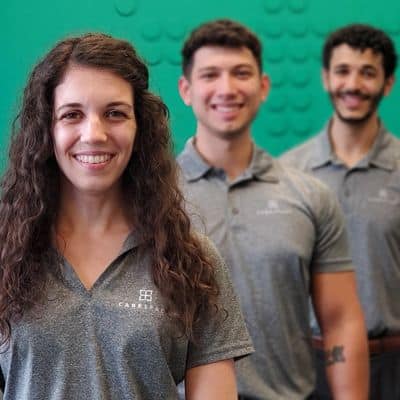Pronator Teres Syndrome
Pronator teres syndrome occurs when the pronator teres muscle in the forearm becomes irritated and tense due to overuse or injury. Whether it’s an injury from work, playing sports, keeping fit or just getting older, CARESPACE can help.
Call (519) 208-2273 or book online today.
The best treatment for pronator teres syndrome in Kitchener Waterloo

Read About Pronator Teres Syndrome
Read the CARESPACE articles below to learn more about pronator teres syndrome.
CARESPACE is less than 10-minutes away
Good news – if you’re looking for pronator teres syndrome treatment near you and are in the Kitchener Waterloo area, there’s a CARESPACE multidisciplinary clinic less than 10-minutes away (book by selecting a discipline below). And even better, our evidence-based team is driven to get the results you want so you can be your best.
There are many causes of pronator teres syndrome
Common causes of pronator teres syndrome include overexertion of the arm muscles with activities such as tennis, weightlifting, using a shovel or straining the wrist during work. It may also be caused by repetitive motions or direct trauma to the forearm. If left untreated, it can reduce hand strength and dexterity leading to further problems. Fortunately, chiropractic care, physiotherapy, massage therapy and other treatments can help to reduce symptoms and prevent recurrence. A chiropractor may recommend specific exercises to help restore normal range of motion and strengthen muscles in the arm. Similarly, physiotherapy can provide relief through stretching exercises that are designed for the particular type of injury, helping improve movement at the elbow joint and nerve pathways that control muscles in the forearm region. Massage therapy also offers relief by improving circulation in affected areas and encouraging natural healing processes.
Get the best treatment to help your pronator teres syndrome
We all know that health and wellness is important, but with so many competing priorities, it’s hard to stay on top of it. CARESPACE provides the best treatment options to help heal your pronator teres syndrome quickly. CARESPACE uses a result-oriented, natural approach to rehabilitation and wellness with your choice of Chiropractic, Massage Therapy and Physiotherapy. CARESPACE practitioners work together to understand both your primary concerns and long-term health goals. Multidisciplinary evidence-based plans are designed to address the root causes and are developed to provide fast and long-lasting relief to ensure you can start living your healthier life today.
What is pronator teres syndrome?
Pronator teres syndrome is an upper body injury where the pronator teres muscle, found in the forearm, becomes tight or compressed. This can cause a number of symptoms including localized pain and discomfort around the elbow, decreased range of motion, numbness and tingling in the hands and fingers, or weakness of grip strength.
What are the symptoms of pronator teres syndrome?
Pronator teres syndrome is a common condition that occurs when the pronator teres muscle in the forearm is weakened and irritated. Symptoms of this condition include pain, aching, or burning sensations in the forearm and hand, especially during movement like gripping objects, turning a key in a door, grasping an armrest. Many people affected by this condition experience weak grip strength as well as reduced range of motion and grasp strength when rotating the wrist. Other symptoms can include tingling or numbness along the thumb side of the hand.
What are the treatments for pronator teres syndrome?
Pronator teres syndrome is a condition caused by the overuse or injury of the pronator teres muscle in your forearm. The condition can cause pain and a decrease in range of motion, but there are treatments available which can reduce symptoms. Receiving chiropractic care from chiropractors focusing on soft tissue mobilization and joint manipulation is one treatment option for pronator teres syndrome, as is physiotherapy for strengthening and stretching exercises for affected areas. Massage therapy can also help to relax painful muscles, improve flexibility, and increase blood circulation throughout the lower arm. Additional treatments may be recommended depending on your individual case and overall health.
Get the pronator teres syndrome treatment that's right for you
Choose Your Chiropractor

Choose Your RMT

Choose Your Physiotherapist

Not sure which discipline to select?
Chiropractic, Massage Therapy and Physiotherapy can all be effective for pronator teres syndrome. Choose any one of the above. Once the initial assessment has been completed, you will be directed to the discipline and practitioner who will be able to deliver the best results.
Still not sure? Simply give us a call at (519) 208-2273 and we will help find the right therapy for your needs.
